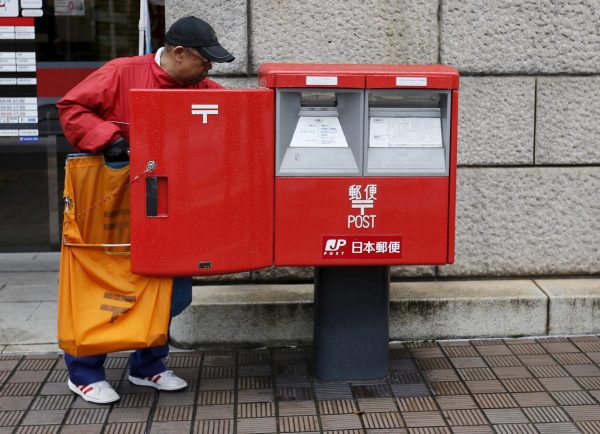What the regulation says is quite simple — employers are prohibited from treating regular and non-regular workers differently within the same firm. ‘Regular workers’ here refers to those who have an employment guarantee up to the mandatory retirement age while non-regular workers are under a fixed-term employment contract.
But the definition of unreasonable treatment is not clearly specified. This is mainly due to the prevalence of seniority-based wages regular workers in Japan.
Seniority-based wages are generally interpreted to reflect the higher skill of a worker with longer experience at a firm — though this is becoming increasingly irrelevant with the rapid development of information and communications technologies. It is also a way to discourage skilled workers from shifting firms since this would entail losing promised wage increases.
Seniority-based wages are also a major factor behind the large wage gap between regular and non-regular workers in the same job. The new ‘Guidelines for Equal Pay for Equal Work’ indicate that employers are obliged to pay equal wages to regular workers and non-regular workers with the same length of work experience at the same firm.
Put another way, this aims to apply seniority-based wages to non-regular workers. But it will not be effective, as non-regular workers do not stay in the same firm long enough to get the benefits of long-term service to a single firm. It de-facto rationalises the current wage gap mainly based on the seniority wage of regular workers.
Alternatively, the logical consequence could be that it should have limited the seniority contribution to regular workers’ wage increases to be within the range of wage increases explained by productivity contributions.
The logic that regular workers are more qualified than non-regular workers — even when they work similar jobs — is not applicable to those non-regular workers who are re-employed in the same firm after mandatory retirement. In 2018, for example, some truck drivers who were re-employed after taking mandatory retirement appealed to the courts that their wages were far lower than the regular workers even though they were driving exactly the same distance as before.
Though the appeal was supported by the Tokyo District Court, the Supreme Court eventually rejected it as a decline in wages after mandatory retirement is widespread in Japan.
This ruling has been incorporated in the current Guidelines, which indicates that ‘Equal Pay for Equal Work’ in the Japanese style has exceptions such as this that compromise current seniority-based wage practices.
The ‘Equal Pay for Equal Work’ regulation is particularly biased when applied to dispatched workers. Like in other developed countries, Japan’s dispatched workers belong to a typical occupational labour market. As their wages are already based on the ‘Equal Pay for Equal Work’ principle, they are not consistent with the seniority-based wages of regular workers in the same firms. As a result, the government has simply decided to force the wages of dispatched workers onto seniority-based workers by providing a table of occupational wages according to seniority.
Overall, there are three problems with the Guidelines. First, seniority-based wages are not sustainable given Japan’s rapidly aging society. The introduction of ‘Equal Pay for Equal Work’ should be a good chance to move from a seniority-based system to flatter wages — but what the Guidelines intends is exactly the opposite.
Second, the Guidelines allows the government to de-facto regulate the occupational wages of dispatched workers. It contrasts with the traditional practice where private sector wages are determined based on negotiations.
Third, though the regulation will raise the wages of dispatched workers based on seniority, it will not benefit dispatch workers overall as their increased cost would lower total employment prospects. Rather, the regulation will protect regular workers with seniority wages.
The Work Style Reform Bill was originally planned to reflect Prime Minister Shinzo Abe’s speech in the Diet that he will abolish the concept of ‘non-regular workers’ to reduce wage disparities. But in order to achieve this he first has to abolish the practice of regular workers and reform traditional seniority-based wage practices and long-term employment guarantees established in Japan’s glory days of high economic growth and a pyramid-like population age structure. Japan’s recent Equal Pay for Equal Work regulation is not an effective means to reform the country’s traditional work style in response to changing economic circumstances, but rather protects this outdated work style.
Naohiro Yashiro is Professor at Showa Women’s University, Tokyo. He specialises in labour economics, social security and Japanese economics.


This analysis confirms what others have observed about Abe’s leadership: he is skillful at pronouncing policy changes that appear to introduce change but with careful examination actually endorse the status quo.
Another example of this is his so called Womenomics. He announced with great fanfare his intention to improve the pay, etc of women in Japan. But he has done little to really accomplish this. Eg, no tax incentives to private corporations for them to pay women more equitable salaries or to promote more women into supervisory, management, or executive positions. He has not placed more women in his Cabinet. Neither he Abe instructed ministries in the government to hire and/or to promote more women into higher paying jobs.
Ie, oftentimes the PM’s policy pronouncements are high sounding PR ploys with little real substance that might shake up the established status quo.